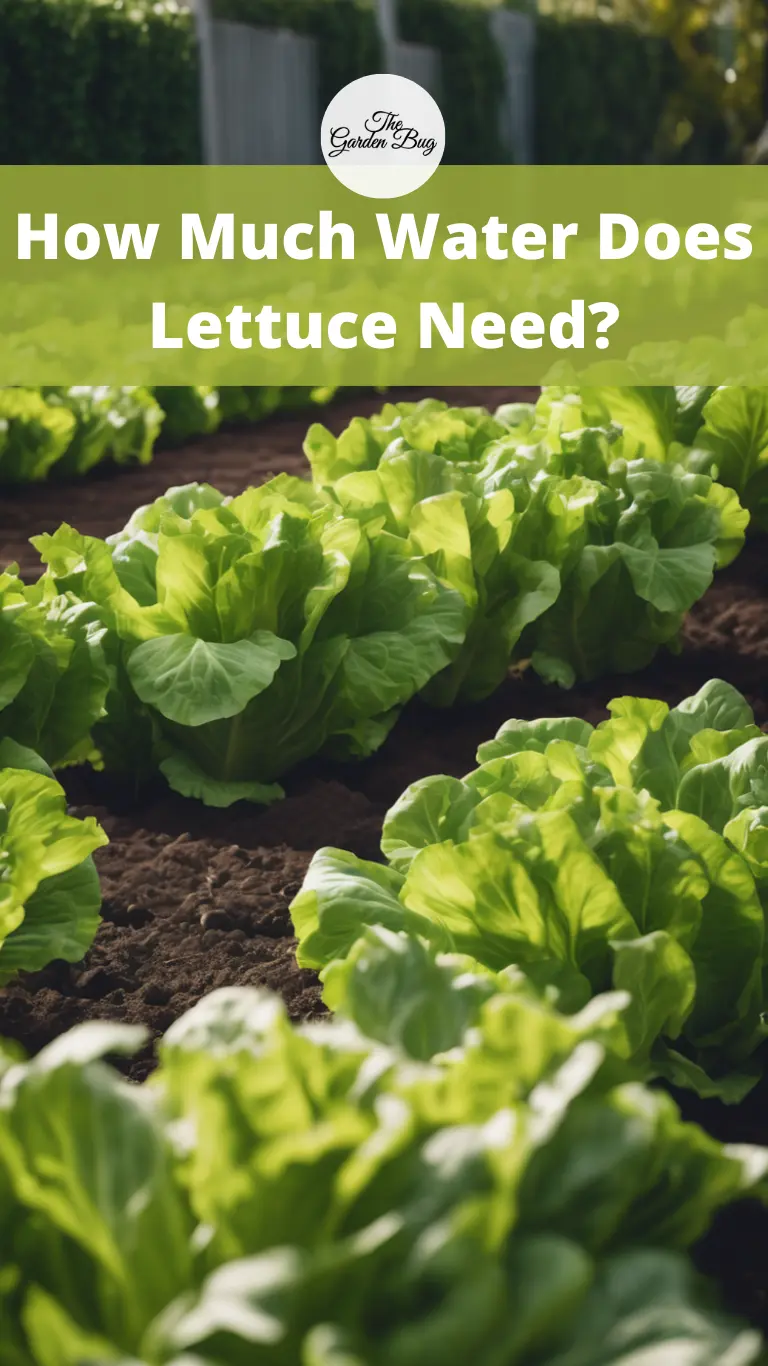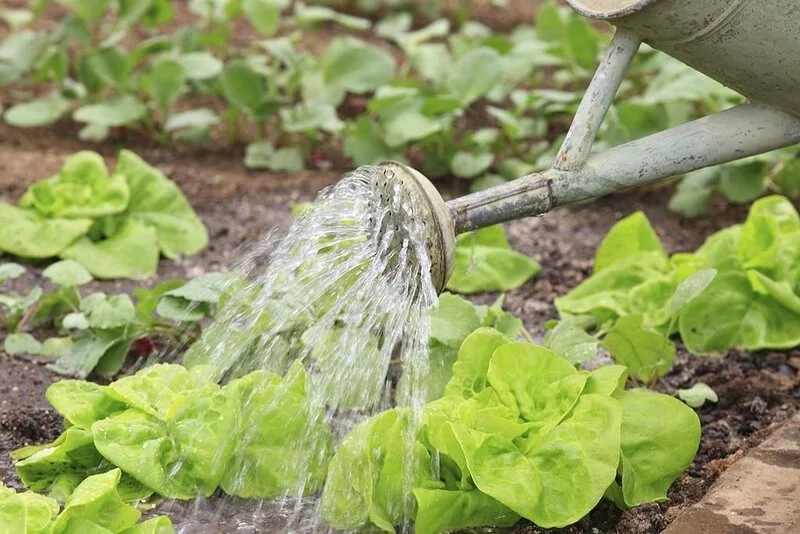There’s something special about growing your own salad greens. It could be the crunch of that fresh lettuce leaf, the bright vibrant color, or perhaps it’s the simple satisfaction of eating something you’ve grown yourself. While tending to a garden of lettuce can be immensely rewarding, it also comes with its fair share of questions. One of the most important being, “How much water does lettuce need?”. A seemingly simple question, but the answer can make all the difference between a thriving salad bowl and a wilted dream.
- SUCCESSFULLY GROW FOOD IN SUMMER’S HEAT with Our Heat-Tolerant Vegetable Varieties – No More Garden Failure Due to High Temperatures
- USDA CERTIFIED ORGANIC & GMO-FREE seeds ensure the safety, health, and natural qualities of your garden and the food it yields.
- HEIRLOOM & OPEN POLLINATED varieties produce delicious food on strong and healthy plants, plus their seeds can be saved and regrown season after season.
- Giftable, INDIVIDUALLY PACKAGED SEEDS, with simple PLANTING INSTRUCTIONS, make growing from seed an enjoyable and accessible experience for all.
- With our FRESH SEEDS boasting EXCELLENT GERMINATION RATES, you can spend less time waiting for sprouts and more time growing your garden. SATISFACTION GUARANTEED
Understanding Lettuce’s Water Requirements
Just like us, plants need water to survive. But, much like the kid who doesn’t want to finish his vegetables, each plant has its unique likes and dislikes when it comes to watering. Lettuce, for instance, is a bit of a water enthusiast. It likes its soil to be consistently moist but not waterlogged.
The exact amount of water your lettuce needs can depend on several factors. The type of lettuce you’re growing, the soil condition, weather, and the growth stage of the plant can all influence its watering needs.
Generally, lettuce requires about 1 to 1.5 inches of water each week. This could be through rainfall or additional watering. Young lettuce plants, or seedlings, require more frequent watering, usually once every day or every other day. As the plant matures, the roots extend deeper into the soil, allowing for less frequent watering.
Getting the watering right is essential for lettuce as its high water content directly impacts its taste and texture. Too little water and your lettuce may taste bitter; too much can cause rot and disease. That’s why understanding the signs of overwatering and underwatering is critical to growing happy, healthy lettuce. But fear not, we’ve got you covered on that front in the next section.
Signs of Overwatering and Underwatering Lettuce
Like any good relationship, your lettuce will communicate with you when it’s not happy, and its language is its leaves. When your lettuce is underwatered, the leaves may wilt or turn yellow and the growth of your plant may slow down. In contrast, if your lettuce is getting too much water, you may notice the leaves turning yellow, but they can also become soft and mushy, and you may see the roots of your plant starting to rot. It’s a tricky balance, but don’t worry, we’re here to guide you through it!
Best Practices for Watering Lettuce
So, how can we ensure our lettuce gets the right amount of water? Here are some best practices:
- Time of Watering: It’s best to water your lettuce early in the morning. This allows any excess water on the leaves to evaporate in the daytime sun, reducing the risk of fungal diseases.
- Method of Watering: The best way to water lettuce is to water at the base of the plant, not from above. This reduces evaporation and helps prevent disease by keeping the leaves dry.
- Amount of Water: As a rule, lettuce needs about 1 to 1.5 inches of water per week. A good trick is to stick your finger in the soil up to the second knuckle. If the soil feels dry at that depth, it’s time to water.
- Consistent Moisture: The soil should always be moist, but never waterlogged. If you’ve just watered and the soil seems to dry out too quickly, you may need to amend it with organic matter to improve its water retention.
Remember, these are just guidelines. Every garden is unique, so you might need to adjust based on your specific conditions. Pay attention to your plants and they’ll tell you what they need! Up next, we’ll talk about how to maintain proper soil moisture for optimal lettuce growth.
Tips to Maintain Proper Moisture for Lettuce Growth
Maintaining just-right moisture levels for your lettuce can feel like a balancing act, but here are a few tips to help you out:
- Soil Type: Opt for well-draining soil. Adding organic matter like compost can improve soil texture and water retention, providing a steady supply of moisture to your lettuce.
- Mulch: Mulching around your lettuce plants can help retain moisture, keep the soil cool, and suppress weeds. Just make sure to keep the mulch away from the plant stem to avoid rot.
- Check the Weather: If it’s a hot and dry week, you may need to water more frequently. Conversely, if it’s a rainy week, you might not need to water at all.
- Maximum Health – Promotes root development and vigorous plant growth
- All Purpose – Use indoors and outdoors for container gardening, flower boxes, hanging baskets and more
- Contains Worm Castings – A plant superfood, worm castings provide essential nutrients to plants including iron, sulfur, calcium, nitrogen, phosphorus and potassium
- Fast Drainage – Contains pumice and perlite to promote aeration of roots and fast drainage
- Formulated with Coco Coir – A sustainable resource that helps maintain moisture for vibrant flowers, vegetables and herbs
Conclusion
Watering lettuce doesn’t have to be rocket science. By understanding your lettuce’s watering needs, recognizing the signs of overwatering and underwatering, and maintaining proper moisture levels in the soil, you can grow a bountiful harvest of crisp, delicious lettuce. So, put on your gardening gloves, grab that watering can, and let your lettuce love grow!
FAQs
- How often should I water my lettuce? Lettuce needs consistent moisture, so it’s best to water it every other day or when the top inch of soil feels dry.
- Can lettuce survive without much water? While lettuce can survive periods of low water, it thrives best with consistent moisture. Without it, lettuce may become bitter or slow its growth.
- What happens if I overwater my lettuce? Overwatering can cause your lettuce leaves to become soft and mushy, and the roots may rot. It also increases the risk of disease.
Remember, gardening is a journey of learning and growth, not just for your plants but for you too. Happy growing!







